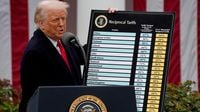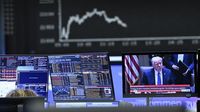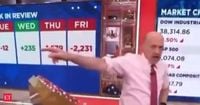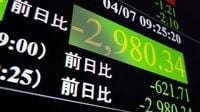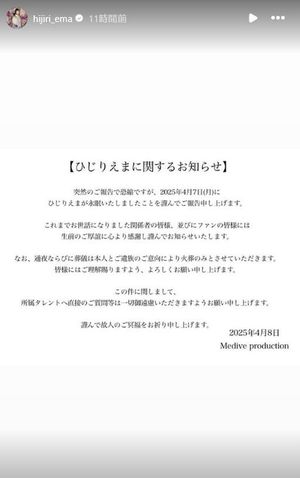U.S. stock markets are facing a tumultuous period as fears of a global economic downturn escalate, largely fueled by President Donald Trump’s aggressive trade policies. On Friday, April 4, 2025, the S&P 500 experienced its worst performance since the COVID crash, plummeting 6%, while the Dow Jones Industrial Average fell by 5.5% and the Nasdaq slid 5.8%. This downturn has raised concerns among investors about a potential repeat of the catastrophic market crash of 1987, which saw a staggering 22% drop in a single day.
Jim Cramer, a prominent financial commentator, highlighted the gravity of the current situation on his Saturday program, stating, "The 1987 scenario — where markets fell for three days and then crashed 22% on Monday — has real relevance now." He warned that if the U.S. does not reward countries and companies that adhere to trade rules, a similar meltdown could be imminent.
Adding to the market's woes, China announced on April 5, 2025, a retaliatory 34% tariff on all U.S. imports, effective April 10. This move was a direct response to Trump’s sweeping tariffs, which have already sparked fears of an extended global economic standoff. Nathan Thooft, Chief Investment Officer at Manulife Investment Management, expressed that the extensive reach of U.S. tariffs means a quick resolution to the trade war is unlikely, stating, "We expect ongoing uncertainty and market volatility for quite some time."
As the situation escalates, the Federal Reserve finds itself in a precarious position. Fed Chair Jerome Powell has indicated that while interest rate cuts could help cushion the economy, the tariffs could also lead to inflation, complicating the Fed’s ability to respond effectively.
Wall Street's struggles are reflected globally, with Asian equity markets also plunging on Monday, April 7, 2025. The Nikkei 225 index in Japan saw a dramatic drop of up to 8.8%, hitting a 1.5-year low before recovering slightly to trade down 7.3%. The broader Topix index fell 8%, while the CSI300 blue-chip index in China declined 4.5% amidst deepening concerns of a prolonged trade war.
In addition, the S&P 500 futures were down 4.2%, Dow futures fell 3.5%, and Nasdaq futures tumbled 5.3% as the sell-off continued across the region. Corporate bond investors rushed to buy insurance contracts against defaults, indicating a widespread panic. The sell-off was triggered by Trump’s announcement of tariff rates as high as 50% on various countries, a move that many analysts deemed excessively aggressive.
As the dust settles from the recent market turmoil, the American investor class, which comprises the top 10% of stock owners, is grappling with a significant shift in their financial landscape. The sell-off resulted in over $5 trillion being wiped off the value of U.S. shares in just two days, marking one of the most severe market crashes in recent history.
In response to the trade tensions, the Indian stock market opened sharply lower on April 7, 2025, with the Nifty 50 declining 5% to 21,758.4 and the BSE Sensex falling 5.29% to 71,379.89. All major sectors in India faced declines, with small-cap and mid-cap stocks losing 10% and 7.3%, respectively. The Nasdaq index had already confirmed its entry into a bear market the previous Friday, April 4, 2025.
Oil prices and other commodities also took a hit, further contributing to the global market decline that followed Trump’s tariff announcement on April 2, 2025. The repercussions of these tariffs are being felt across multiple sectors, and analysts are bracing for continued volatility in the markets.
As investors sift through the chaos, many are left wondering how long the impacts of these tariffs will last and what measures the Federal Reserve might take to stabilize the economy. With tensions between the U.S. and China escalating, the outlook for the markets remains uncertain.
In the midst of this turmoil, the economic landscape is shifting rapidly, and the potential for further market declines looms large. Investors are advised to remain cautious as they navigate these turbulent waters, keeping a close eye on developments in the ongoing trade war and the Fed's response to the evolving situation.
With the markets in disarray and fears of recession growing, the coming days will be critical for investors and policymakers alike. As the situation unfolds, many are left to ponder the long-term implications of these aggressive trade policies and their potential to reshape the global economic landscape.
